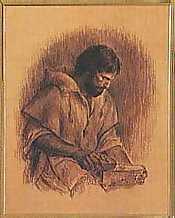As a child, I memorized some big words about the nature of God. God was “omnipotent”, “omniscient”, and “omnipresent”. This all-powerful, all-knowing, and present everywhere God seemed far removed from me and from my experiences. This ‘omni-God’, who had a rosy existence high above the clouds, was both comforting and frightening to a powerless child. God was in control, and that was good or bad, depending on one’s behavior.
God and Santa Claus
At Christmastime, Santa Claus became intertwined with God in my childhood thinking. Santa Claus lived up at the top of the world. He kept a big book with the names of the naughty and nice for the sole purpose of delivering gifts to deserving children at Christmas. But, God remained in command. God could make Santa bring presents even to naughty children.
There was another important distinction between God and Santa Claus. Santa Claus did not hover in my childhood consciousness year round. I only thought about Santa in the days before Christmas, whereas God always seemed to be present.
Discovering a more personal God
At some point during my childhood religious instruction, the emphasis shifted away from the ‘omni-God’ to a more personal God. God was intimately involved in human affairs. Christmas was the wonderful celebration of God’s coming into the world as a little baby, and living as one of us. God was the original giver of gifts, offering both the naughty and nice the gift of love.
The Christmas story reveals some surprising things about the omnipotent, omniscient, and omnipresent God. God is gentle. God comes into the world as a powerless, vulnerable, and dependent baby. God is humble. God comes down to our level, and participates in our human experience. The heavenly vantage point of ‘omni’ characteristics does not prevent God from participating in human experience.
The story of Christmas is an ancient story with the elements of a great drama – suspense, action, mystery and a diverse cast of characters. Even though it has been retold annually for over 2000 years, it continues to speak to the human condition. The plot is simple; its meaning is deep.
 |
"Adoration of the Shepherds" Gerard van Honthorst, 1622 |
The story as we know it today is a combination of two ancient narratives, one from the Gospel of Luke, and the other from the Gospel of Matthew. The story begins with a couple, Mary and Joseph, who are obedient to the will of God. She will bear a holy child, miraculously conceived; he will stick by her through thick and thin. They journey to Bethlehem where the baby, Jesus, is born in a stable. Angels announce his birth to shepherds, who hurry from the fields to see the baby. A brilliant star guides wise men from the East towards Bethlehem where they find the child and worship him, laying expensive gifts at his feet. All seems rosy until an angel warns Joseph in a dream that King Herod has sent his troops to kill the child. The family flees, under cover of darkness, into Egypt.
This baby’s introduction to the world is not auspicious. He is born in the equivalent of a barn. His bed is a feeding trough for the animals. The dark and uncomfortable place of his birth makes God present to poor and powerless shepherds as well as to privileged magi.
God’s approachability and gentleness are part of the enduring appeal of the story. The vulnerability of the infant in the manger stands in stark contrast to the premium that we place on self-reliance and independence. The story of this birth gives us an opportunity to admit our own vulnerability. We can lay our weaknesses before the manger, where they become a gift that opens us to the presence of God. The manger becomes the place of intimacy with God, and a symbol of God’s nurturing love where all people can go to be fed.
At the manger, shepherds, who were little better than outlaws, found acceptance and went away empowered. The shepherds remind us that all of us are deserving of God’s love. At the manger, the magi, who were seekers of knowledge, found wisdom and went away fulfilled. The magi remind us that faith is a life long quest to encounter the divine.
Gifts that last
The gifts that Santa brought me as a child were transient. They have long since ceased to exist as objects in my life, and have faded from memory. The gifts that God offers are ever-present. Whether we have been naughty or nice, gifts of reconciliation, acceptance, and wisdom wait to be unwrapped. This Christmas may we find intimacy with the gentle God who is light for our darkness, comfort for our discomfort, and power for our weakness.
 |
Image Courtesy of Grant Cochrane/FreeDigitalPhotos.net |















